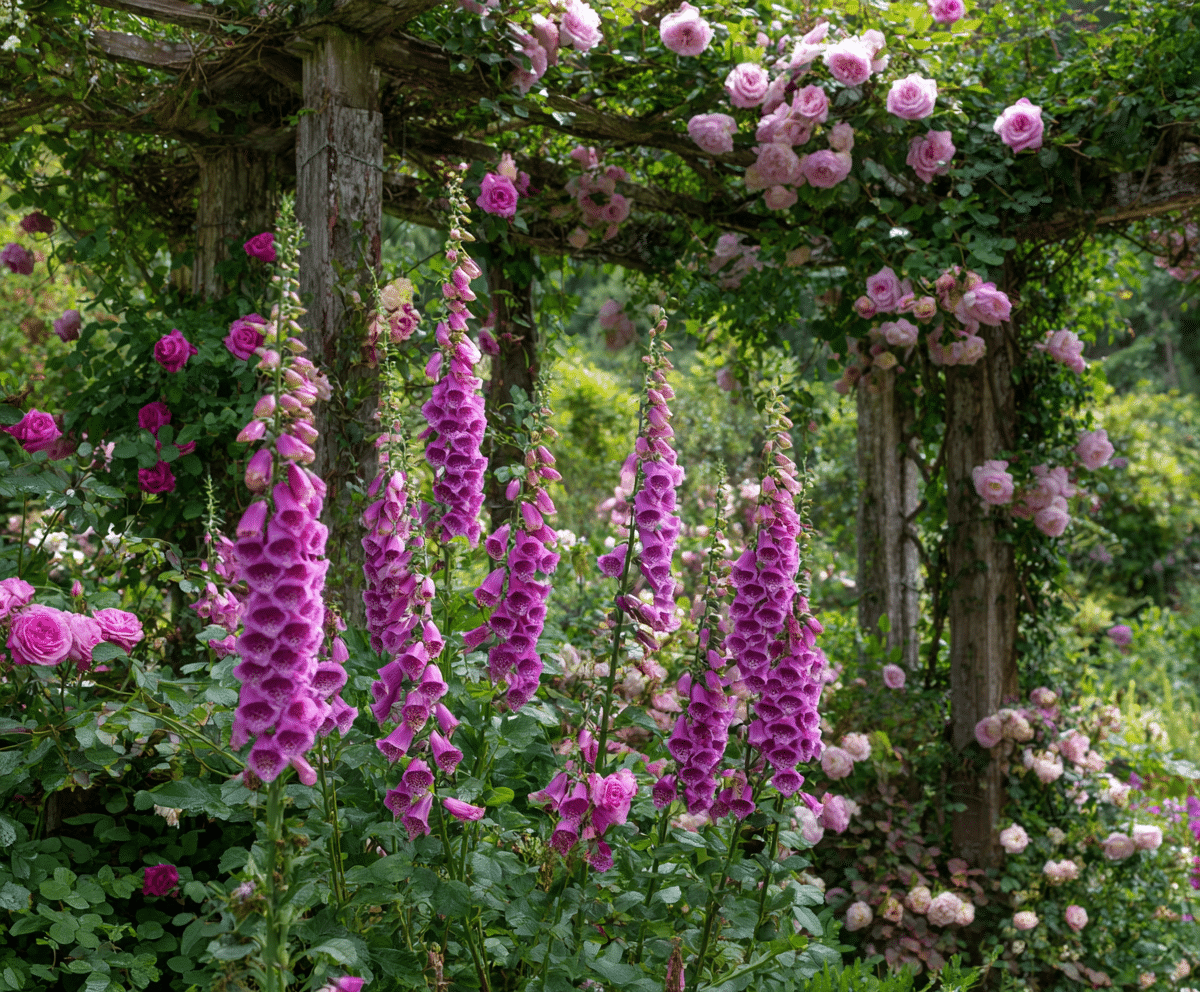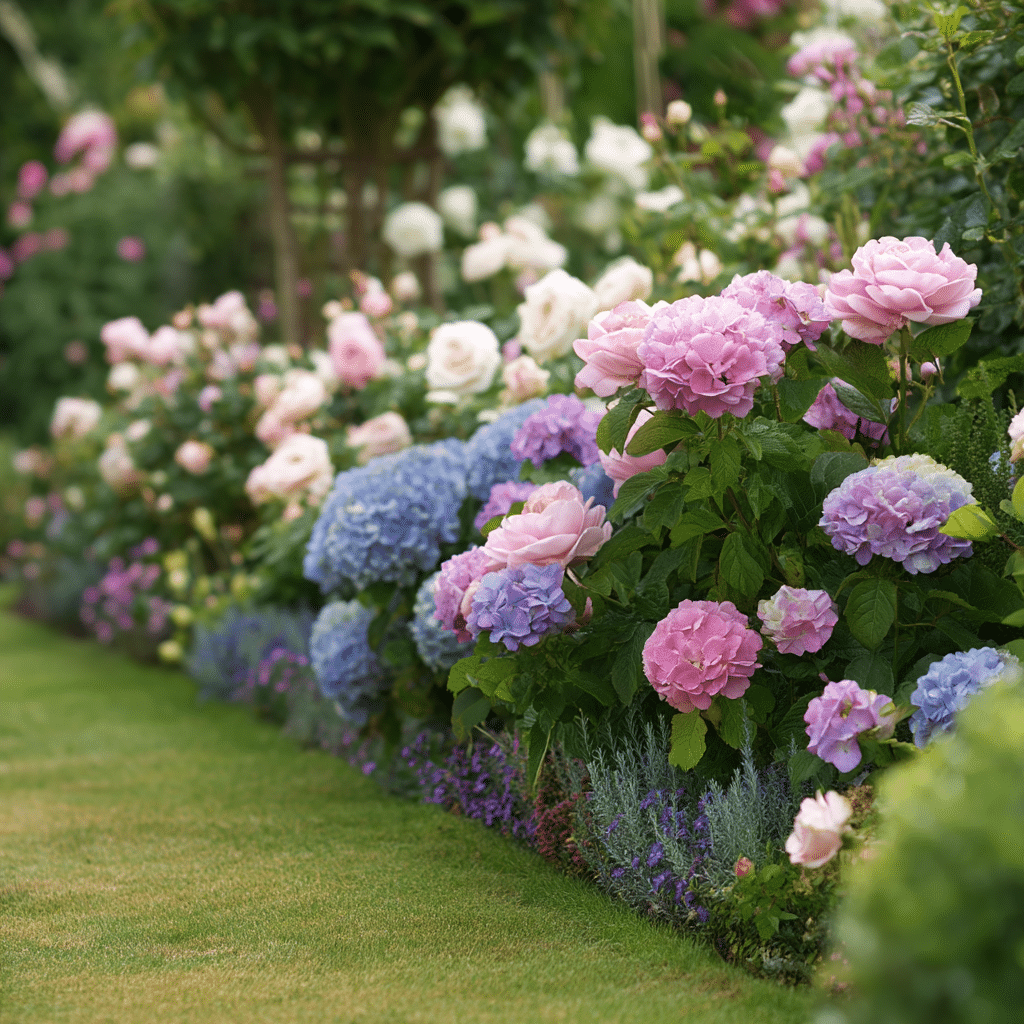Roses are timeless garden favorites, celebrated for their fragrance, elegance, and ability to add romance to any landscape. While they look stunning on their own, roses truly shine when paired with the right companions. Choosing plants that share similar sunlight, soil, and water needs not only enhances their beauty but also supports healthier growth, extended bloom seasons, and natural pest resistance. Whether you’re designing a classic cottage garden or a modern landscape, these carefully chosen companion plants will complement your roses while creating a vibrant, thriving garden.
Table of Contents
How to Grow Roses and Best Companion Plants for Roses
Before adding companion plants, it helps to understand the basic needs of roses. These shrubs thrive in full sun, with at least six hours of direct light daily. They prefer slightly acidic, well-draining soil enriched with organic matter such as compost or leaf mold.
Keep the soil evenly moist, especially during the first year, but avoid watering the foliage late in the day to reduce the risk of disease. Fertilize with a rose-specific blend to encourage continuous flowering. For winter care, ungrafted roses typically need no special treatment, while grafted roses benefit from a protective mound of compost or shredded leaves at the base.
Prune roses in early spring to remove dead or weak growth, improve airflow, and shape the plant. Regular deadheading also helps encourage repeat blooms throughout the season.
1. Hydrangea
Hydrangeas bring large, lush flower clusters that complement the refined form of roses. Both enjoy sunny conditions with some afternoon shade in hot climates. Their overlapping bloom times create a dramatic and colorful pairing in garden borders.
2. Lavender
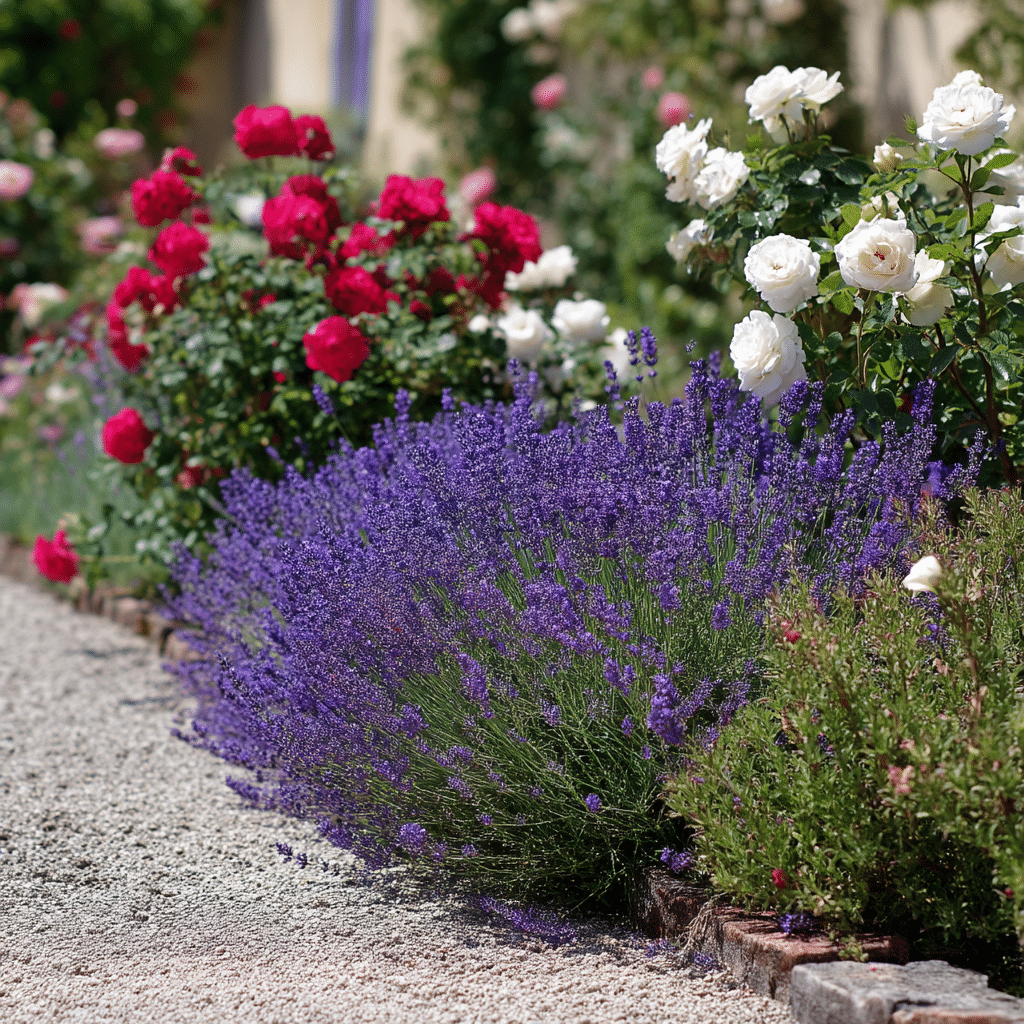
Lavender’s aromatic spikes contrast beautifully with the layered petals of roses. Both thrive in full sun and well-drained soil. Lavender also helps deter pests, making it as practical as it is attractive alongside roses.
3. Foxglove
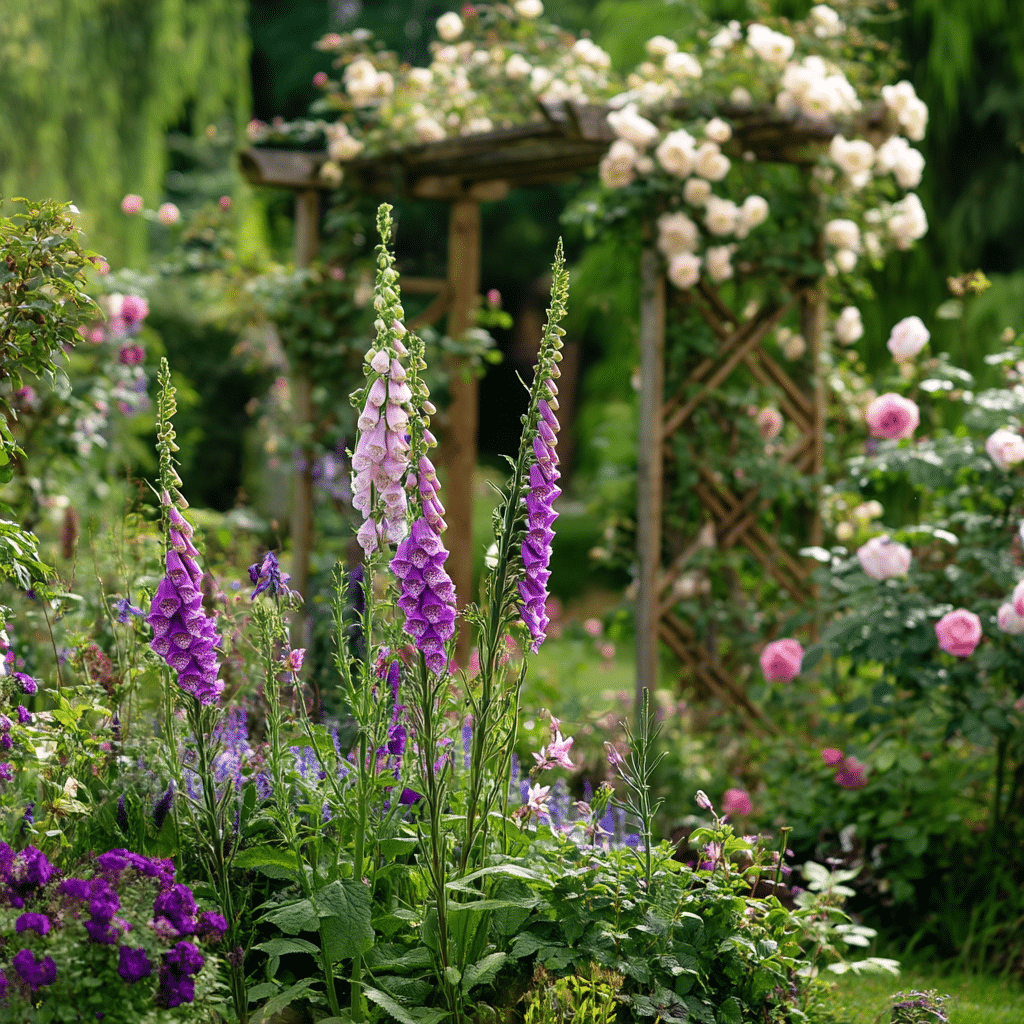
The tall, tubular blooms of foxglove add vertical interest next to climbing roses. Their midsummer flowers create a cottage-garden effect, with foxglove spires rising behind or beside cascading rose canes.
4. Allium
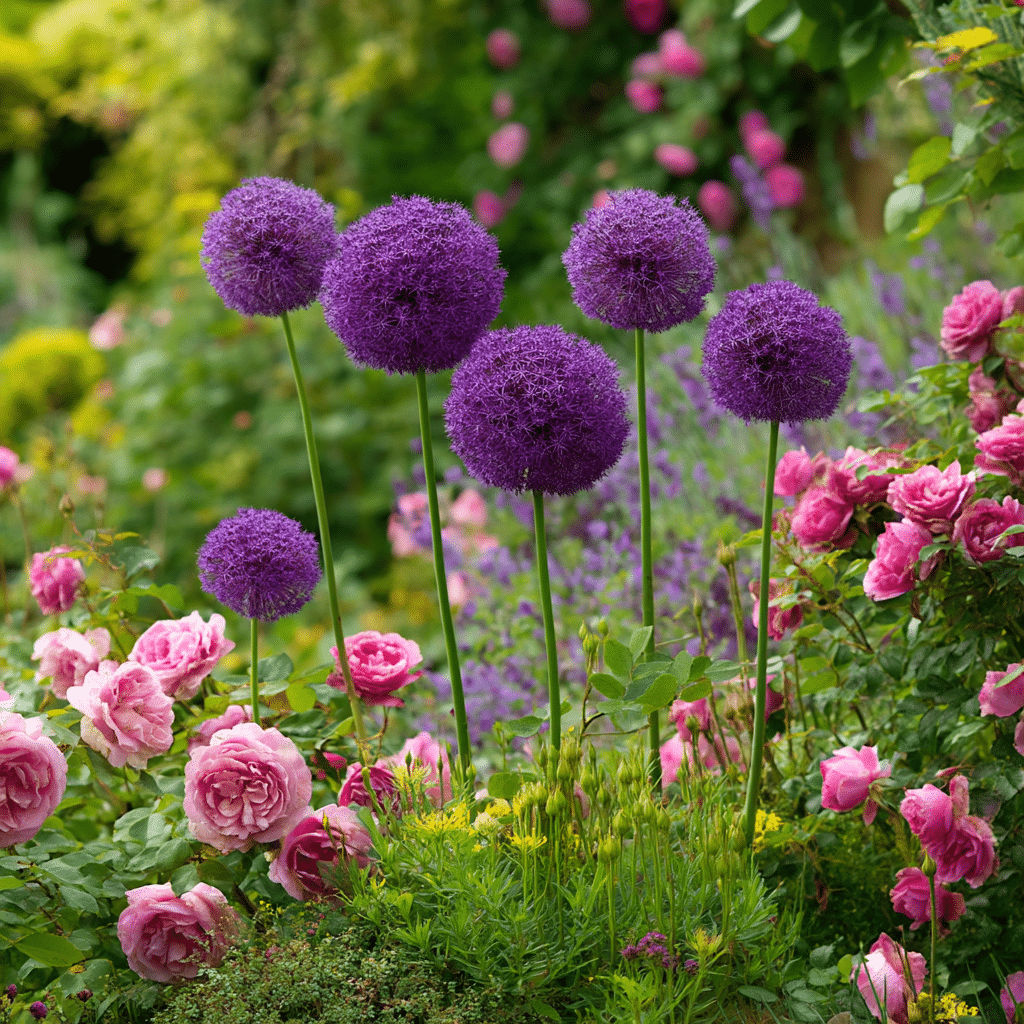
With its whimsical, globe-shaped blooms, allium adds texture and fun to rose plantings. These perennials attract pollinators and thrive in the same sunny, well-drained conditions that roses prefer.
5. Stonecrop (Sedum)
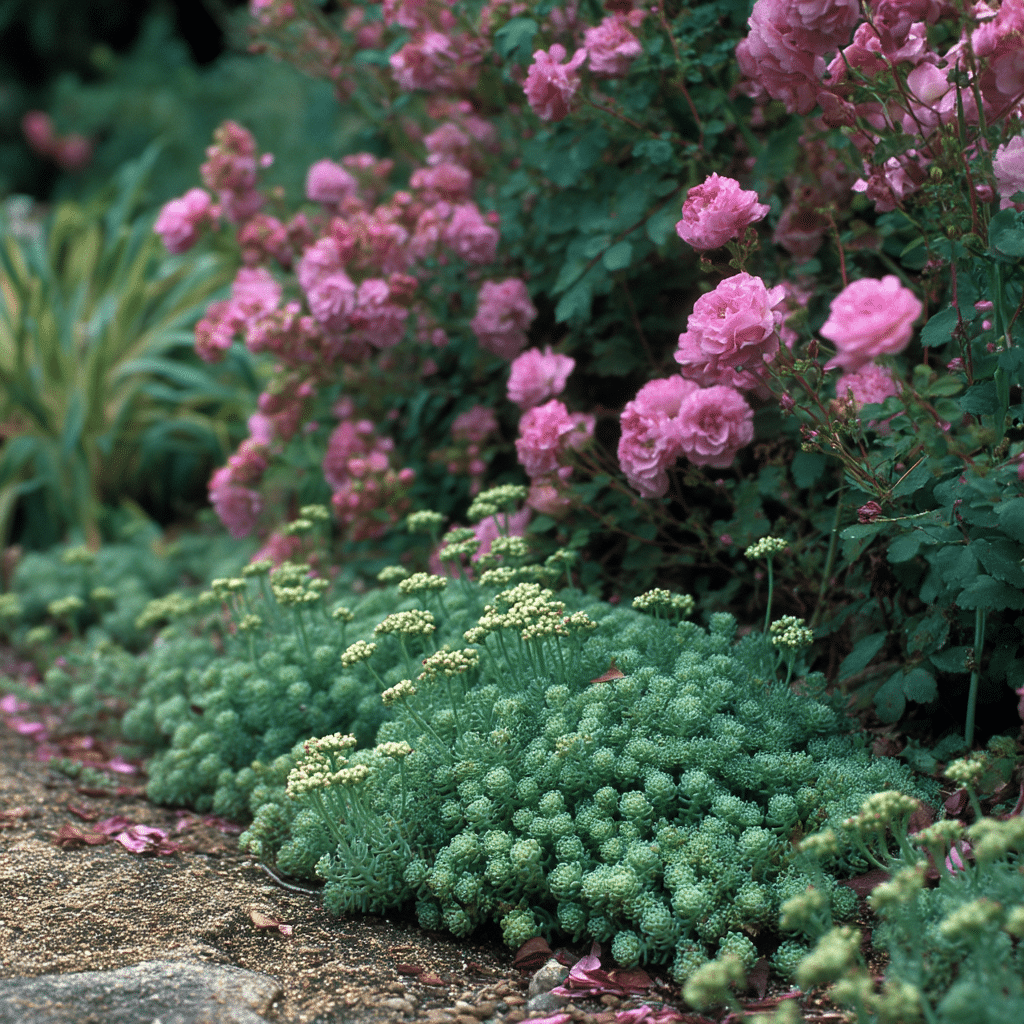
Low-growing sedum works beautifully at the base of taller rose shrubs. Their fleshy foliage and clusters of flowers provide season-long interest while requiring little maintenance. Sedum is especially striking when paired with ground-cover roses.
6. Tickseed (Coreopsis)
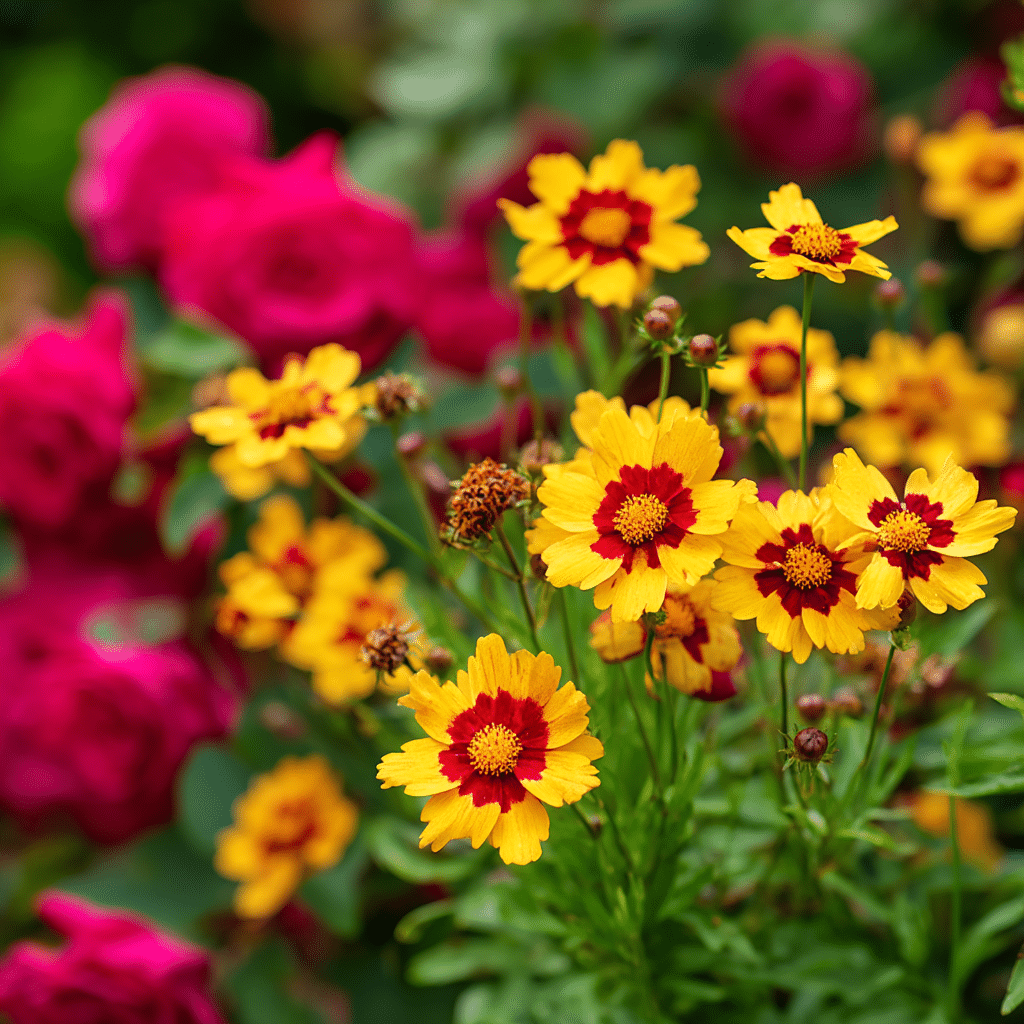
Coreopsis is a long-lasting cut flower that pairs well with roses in both garden beds and vases. Its cheerful blooms in yellow and red tones add contrast and extend the life of floral arrangements.
7. Russian Sage
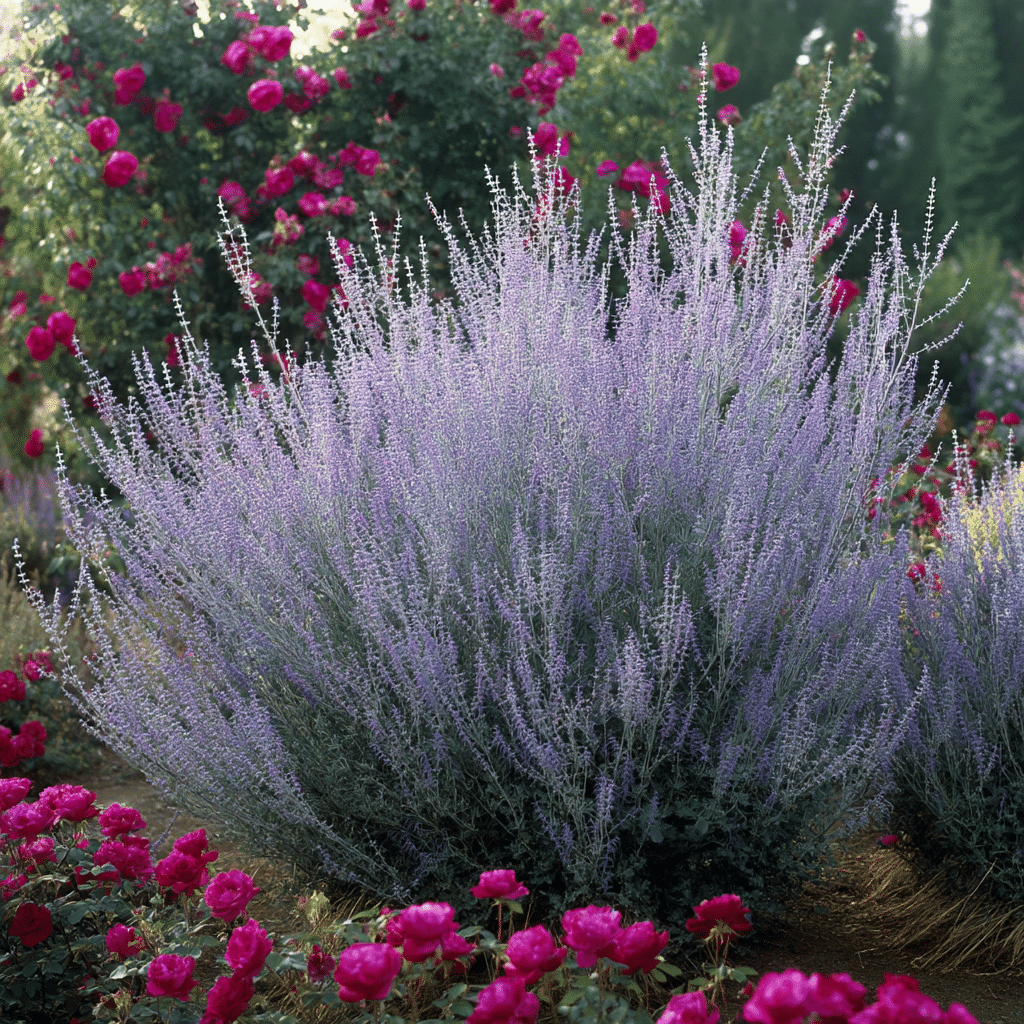
With frosty foliage and tall purple spikes, Russian sage offers a cool counterbalance to the warm hues of roses. It’s drought-tolerant once established and thrives in full sun, making it an ideal low-care companion.
8. Coneflower (Echinacea)
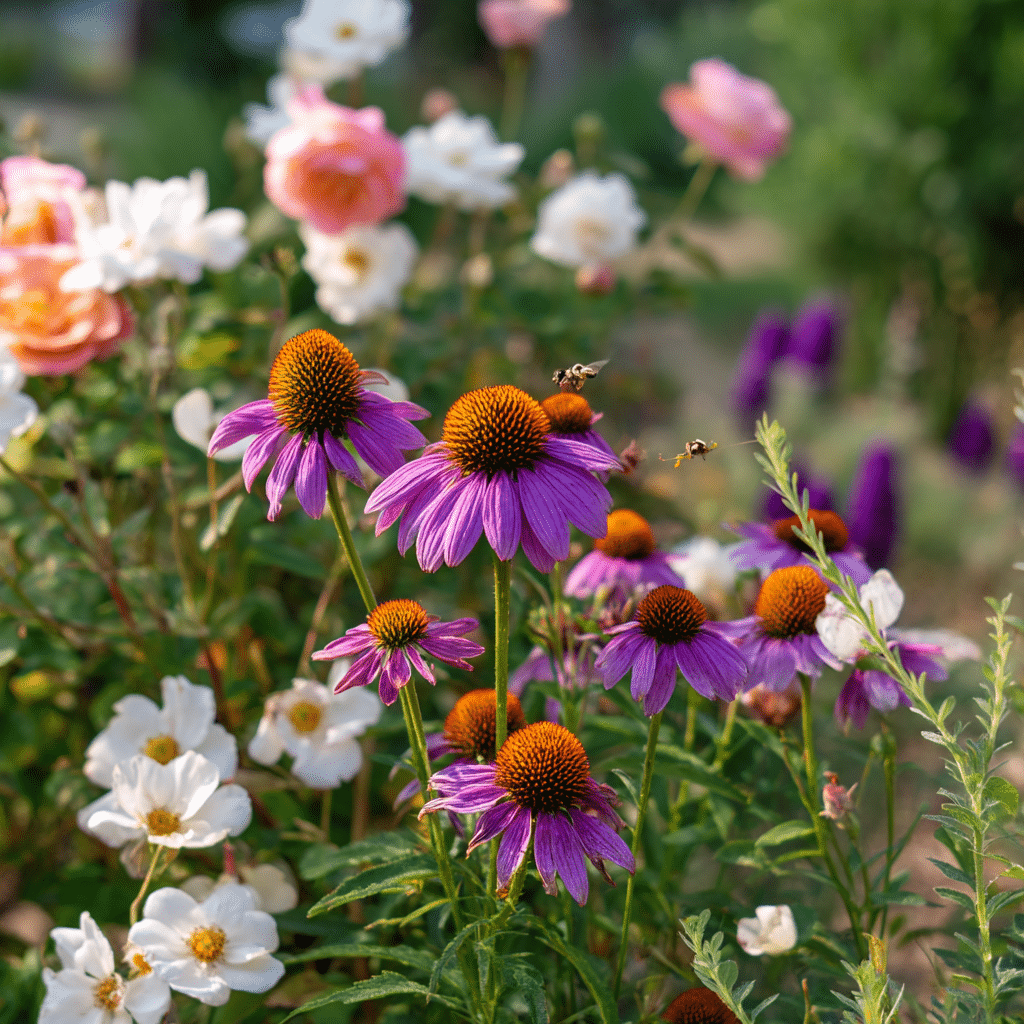
Coneflowers bring bold colors and strong stems that stand tall alongside roses. Available in many shades, they bloom in mid- to late summer, filling the garden with vibrant energy and attracting pollinators.
9. Phlox
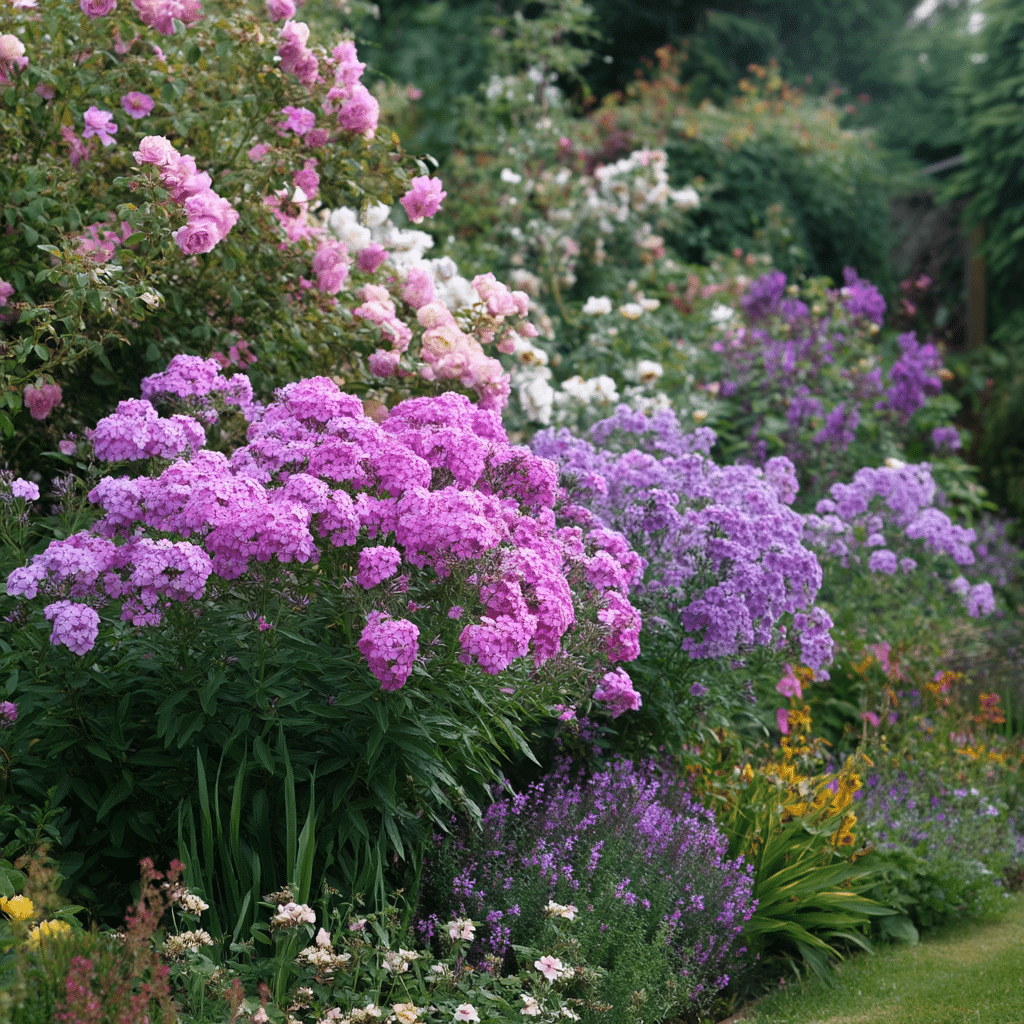
Phlox grows in upright clusters, offering a colorful backdrop for shrub roses. Its sweet fragrance and nectar-rich blooms draw butterflies and bees, enriching the ecosystem around your rose garden.
10. Black-Eyed Susan (Rudbeckia)
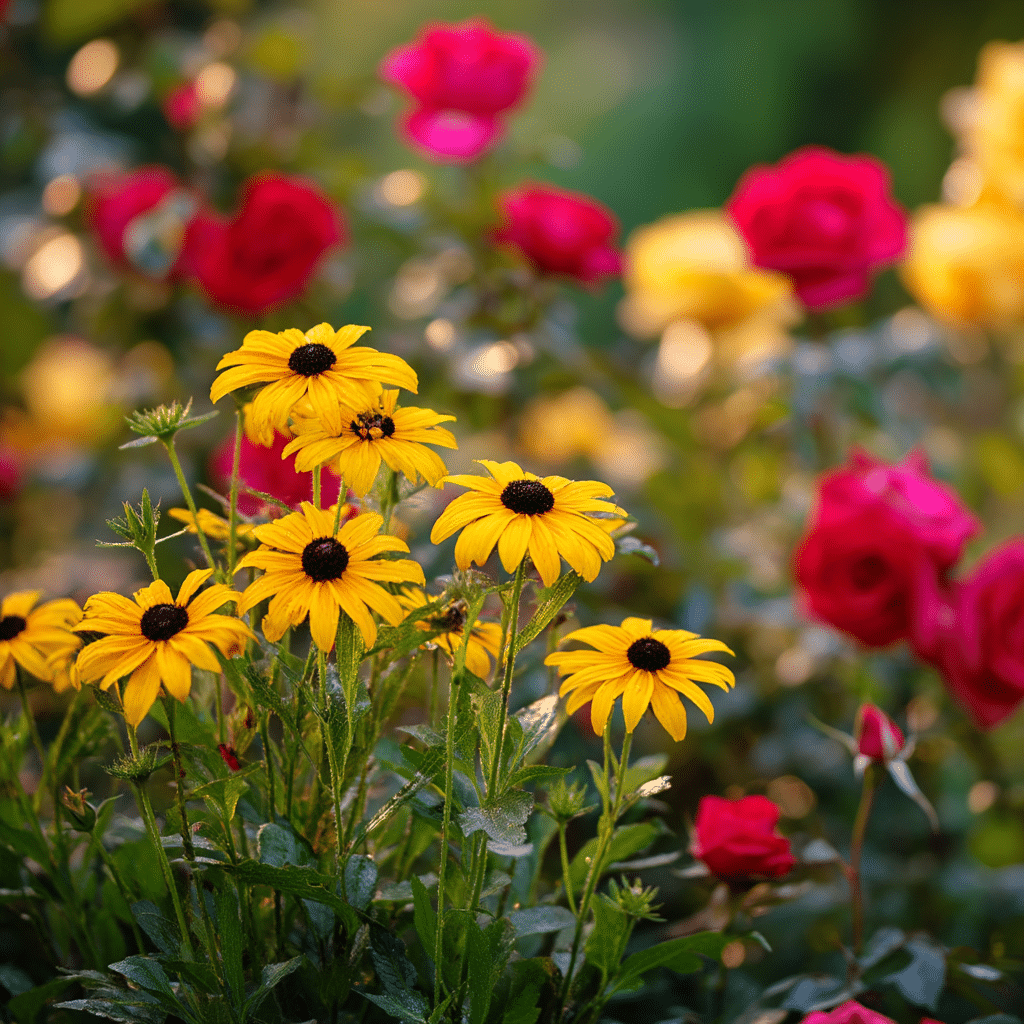
Rudbeckia extends garden color well into late summer and fall, complementing the later flushes of roses. Their golden blooms and dark centers provide cheerful contrast, while seed heads feed birds through autumn.
11. Yarrow (Achillea)
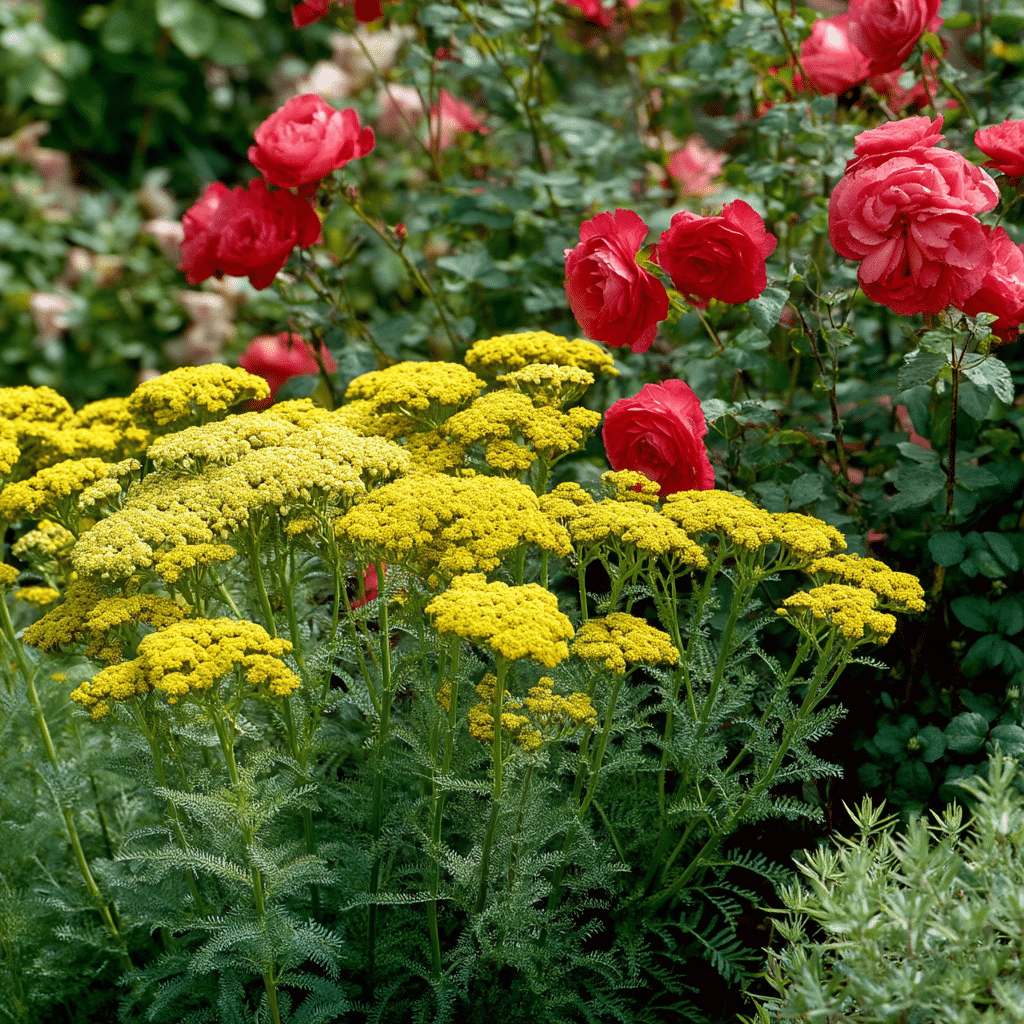
Yarrow adds feathery foliage and clusters of long-lasting flowers that pair well with roses in mixed borders. Hardy and drought-tolerant, it thrives in sunny, well-drained soil and also makes excellent cut flowers.
12. Catmint (Nepeta)
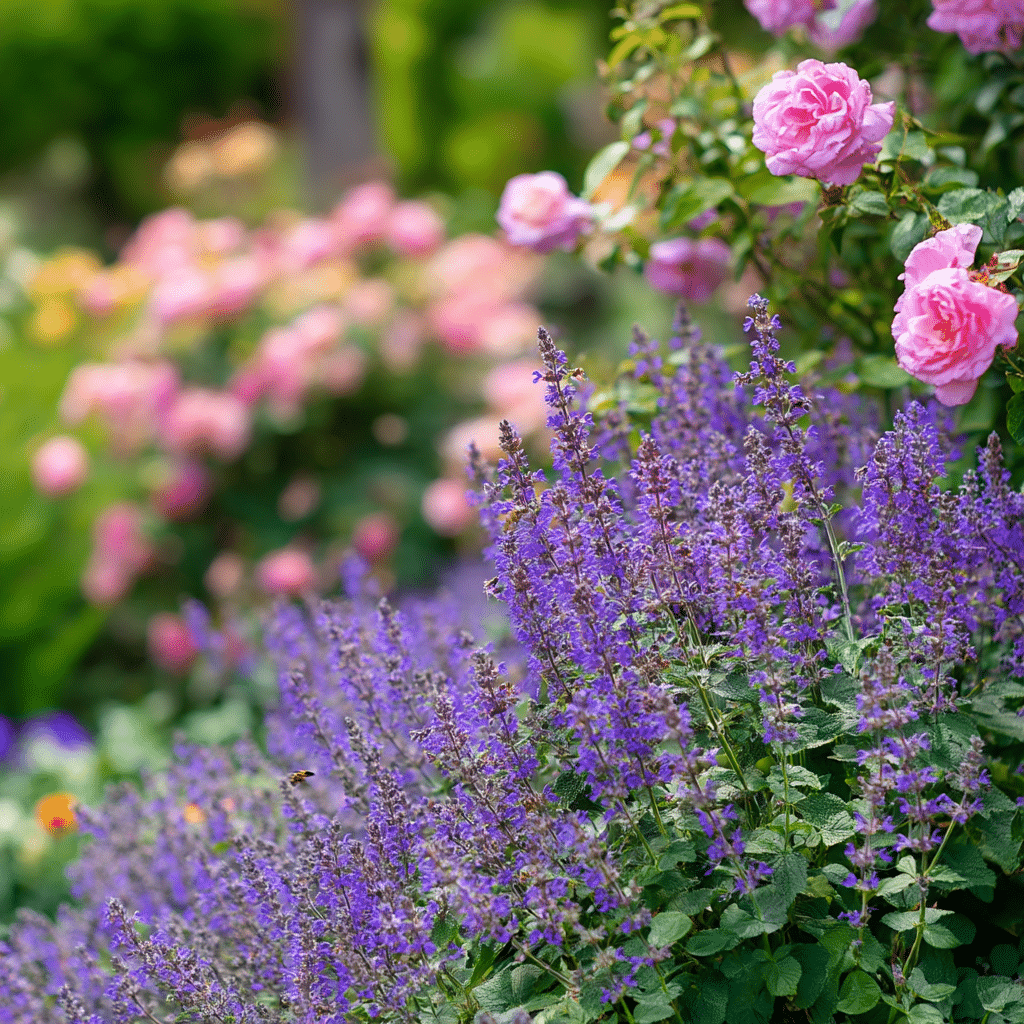
Catmint brings fragrant purple blooms and silvery foliage that contrast beautifully with roses. While cats may be drawn to it, they generally leave roses alone due to their thorns. This pairing creates a colorful and aromatic garden bed.
Conclusion
Pairing roses with the right plants enhances both beauty and performance. From pollinator-friendly coneflowers to fragrant lavender and hardy sedum, companion plants provide texture, seasonal interest, and natural balance in the garden. With thoughtful combinations, your rose beds can bloom longer, stay healthier, and look more vibrant all year.

